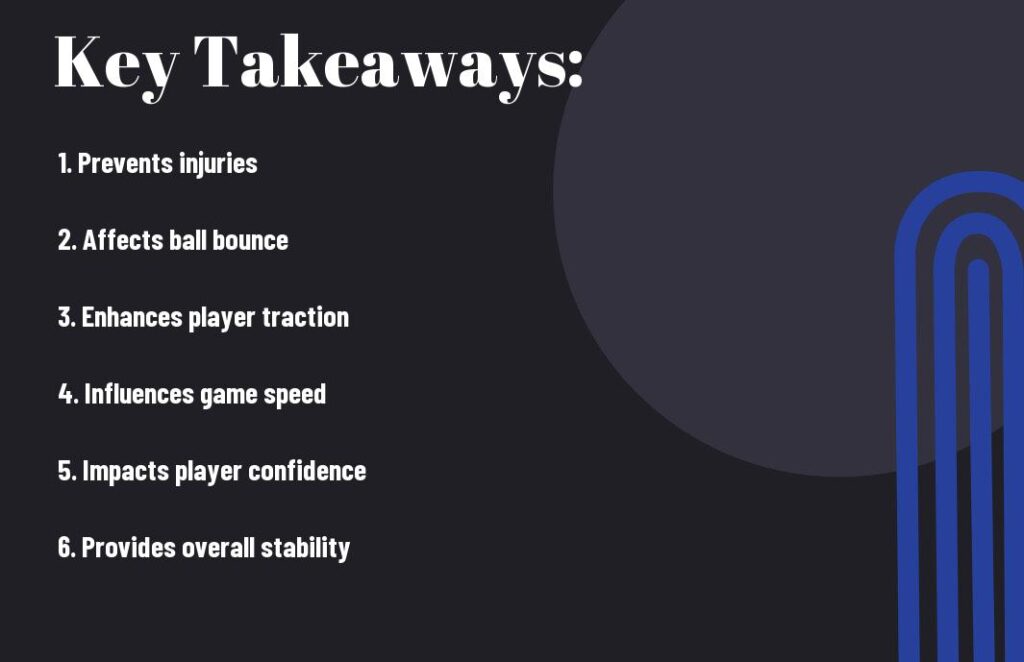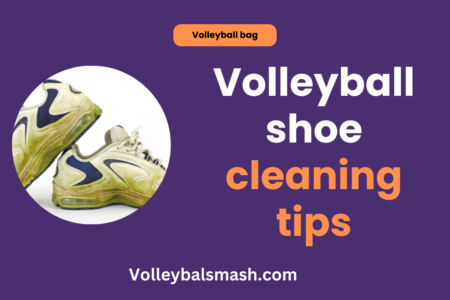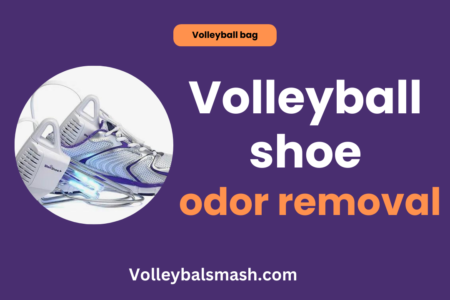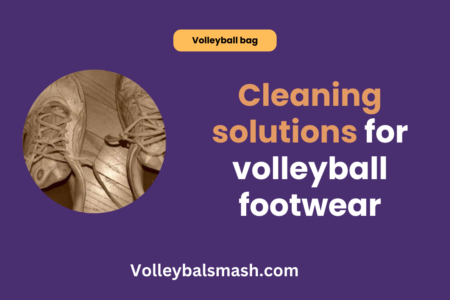Choosing the right surface texture for a volleyball court is crucial to ensuring the safety and performance of the players. Whether you’re a professional athlete or simply enjoy playing volleyball recreationally, the surface texture of the court can significantly impact your game. In this blog post, we will explore the reasons why the surface texture is important for a volleyball court and how it can affect your overall experience. Understanding these factors will help you make informed decisions when it comes to choosing a volleyball court for your next game or tournament.
Effects of Surface Texture on Volleyball Performance

Obviously, the surface texture of a volleyball court has a significant impact on the overall performance of the players and the game itself. The texture of the court directly affects player safety, injury prevention, ball control, and gameplay dynamics.
Impact on Player Safety and Injury Prevention
The surface texture of a volleyball court can significantly impact player safety and injury prevention. A smooth, slippery surface can increase the risk of slips and falls, while a coarse, abrasive surface can lead to abrasions and turf burns. Uneven or poorly maintained surfaces can increase the risk of ankle or knee injuries. Therefore, it is crucial to ensure that the surface texture of the volleyball court promotes traction and stability, reducing the risk of accidents and injuries during gameplay.
Influence on Ball Control and Gameplay Dynamics
The surface texture of a volleyball court directly influences ball control and gameplay dynamics. A smooth surface may result in faster ball movement and less predictable bounces, affecting the ability of players to anticipate and control the ball. On the other hand, a textured surface provides more consistent ball behavior, allowing for better precision and control. Surface texture can also impact the speed and direction of ball serves and spikes, ultimately affecting the overall dynamics of the game. It is essential to consider the surface texture of the volleyball court to optimize gameplay and competitive performance.
Materials and Construction of Volleyball Court Surfaces
Now let’s dive into the materials and construction of volleyball court surfaces. The type of materials used and the construction of the court surface play a crucial role in determining the quality and performance of the volleyball court. The surface must be able to withstand the high impact and stress of the game, while also providing optimal traction and durability for players.
Comparison of Indoor and Outdoor Court Surfaces
When comparing indoor and outdoor volleyball court surfaces, there are distinct differences in the materials used and the construction of the surfaces. Indoor courts typically utilize wood or synthetic materials such as rubber or PVC, providing a smooth and consistent surface. On the other hand, outdoor courts are often made of concrete or asphalt, which are more durable and resistant to outdoor elements. Here is a comparison of indoor and outdoor court surfaces:
| Indoor Court Surfaces | Outdoor Court Surfaces |
| Smooth and consistent surface | Durable and resistant to outdoor elements |
| Wood or synthetic materials | Concrete or asphalt |
| Regular maintenance required | Less maintenance required |
Optimal Materials for Enhanced Traction and Durability
When it comes to selecting the optimal materials for volleyball court surfaces, enhanced traction and durability are paramount. The surface must provide enough traction to prevent slipping and allow for quick movements, while also withstanding continuous use and environmental factors. Materials such as rubber, PVC, and polyurethane are commonly used for indoor courts due to their ability to provide excellent traction and durability. Outdoor courts, on the other hand, require materials like concrete and asphalt that can withstand harsh weather conditions and heavy use.
Maintenance and Upkeep of Textured Volleyball Courts
Despite the durable nature of textured volleyball court surfaces, regular maintenance is essential to ensure the longevity and performance quality of the playing area. According to How the Court Surface Affects the Playing Style of the Game, the surface texture directly impacts the way the ball moves and bounces, making it crucial to uphold the surface texture to maintain the standard of play.
Regular Maintenance for Preserving Surface Quality
To preserve the quality of your textured volleyball court, regular maintenance is key. This includes sweeping the court to remove debris, regularly hosing down the surface to remove dirt and grime, and repairing any minor cracks or damage. By regularly cleaning and maintaining the textured surface, you can ensure a consistent playing experience for both you and your fellow volleyball enthusiasts.
Long-Term Care and Resurfacing Considerations
While regular maintenance will help prolong the lifespan of your textured volleyball court, it’s important to consider long-term care and resurfacing. Over time, the texture and composition of the surface may wear down, impacting ball response and overall playability. When signs of wear become apparent, it’s crucial to consider resurfacing options to restore the texture and performance of the court. This may involve consulting with a professional to assess the condition of the surface and determine the best course of action for long-term care.
Innovation and Future Developments in Court Surfaces
However, the innovation and future developments in court surfaces have not stopped with the current technology. Advancements in volleyball court surface technology have been influenced by a better understanding of the game and its impact on athletes. As stated in a recent article from Volleyball Design and How Volleyball Designs Affect the Game, the development of court surfaces has been crucial in improving player safety and game performance.
Advancements in Surface Technology for Volleyball Courts
Advancements in surface technology for volleyball courts have been a game-changer in enhancing the overall playing experience. The focus has been on creating surfaces that not only provide excellent traction and ball bounce but also reduce the risk of injuries. The introduction of shock-absorbing materials and impact-resistant technologies has significantly improved player safety and performance on the court.
Emerging Trends in Sports Surface Engineering
As the demand for high-performance volleyball courts continues to grow, emerging trends in sports surface engineering are paving the way for innovative solutions. Sustainable materials, such as recycled rubber, are being utilized to create durable and eco-friendly court surfaces. Additionally, advancements in modular court systems have made it easier to install and maintain volleyball courts, offering flexibility and cost-effectiveness for facility owners.
Summing up
Ensuring the proper surface texture for a volleyball court is essential for a successful game. The texture of the court impacts the way the ball moves across the surface and the players’ ability to move and react to the ball. When the texture is too smooth, the ball may skid and become unpredictable, while a rough texture may cause the ball to bounce irregularly. By understanding the importance of surface texture, you can ensure that the volleyball court provides a fair and consistent playing experience for all involved.
FAQ
Why is the surface texture important for a volleyball court?
The surface texture of a volleyball court is important because it directly impacts the ball’s movement and player safety. A rough surface texture provides better traction for players, reducing the risk of slipping and injuries. It also affects the ball’s ability to bounce consistently, allowing for more predictable gameplay.
What are the different types of surface textures used for volleyball courts?
The most common types of surface textures used for volleyball courts are sand, synthetic materials, and hardwood. Sand surfaces are commonly found on outdoor courts and provide a natural, gritty texture. Synthetic materials offer a more uniform and predictable surface, while hardwood surfaces are preferred for indoor courts due to their smooth and durable texture.
How does the surface texture of a volleyball court impact gameplay?
The surface texture of a volleyball court can significantly impact gameplay by affecting the speed, spin, and bounce of the ball. A rough surface texture slows down the ball and causes it to spin less, making it easier for players to predict its movement. On the other hand, a smooth surface texture allows for faster ball movement and more controlled spins, resulting in a faster-paced and dynamic game. Additionally, the surface texture can influence the players’ footwork and agility, making it crucial for maintaining a fair and safe playing environment.



